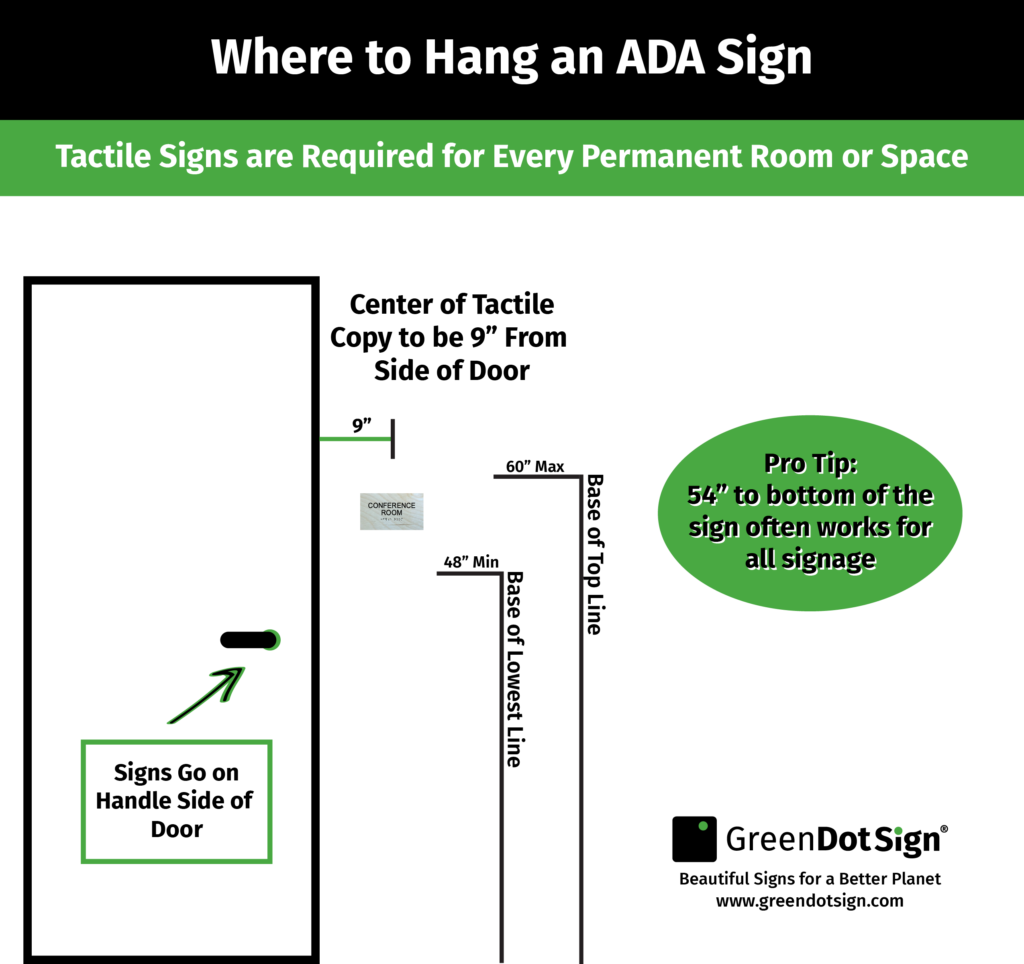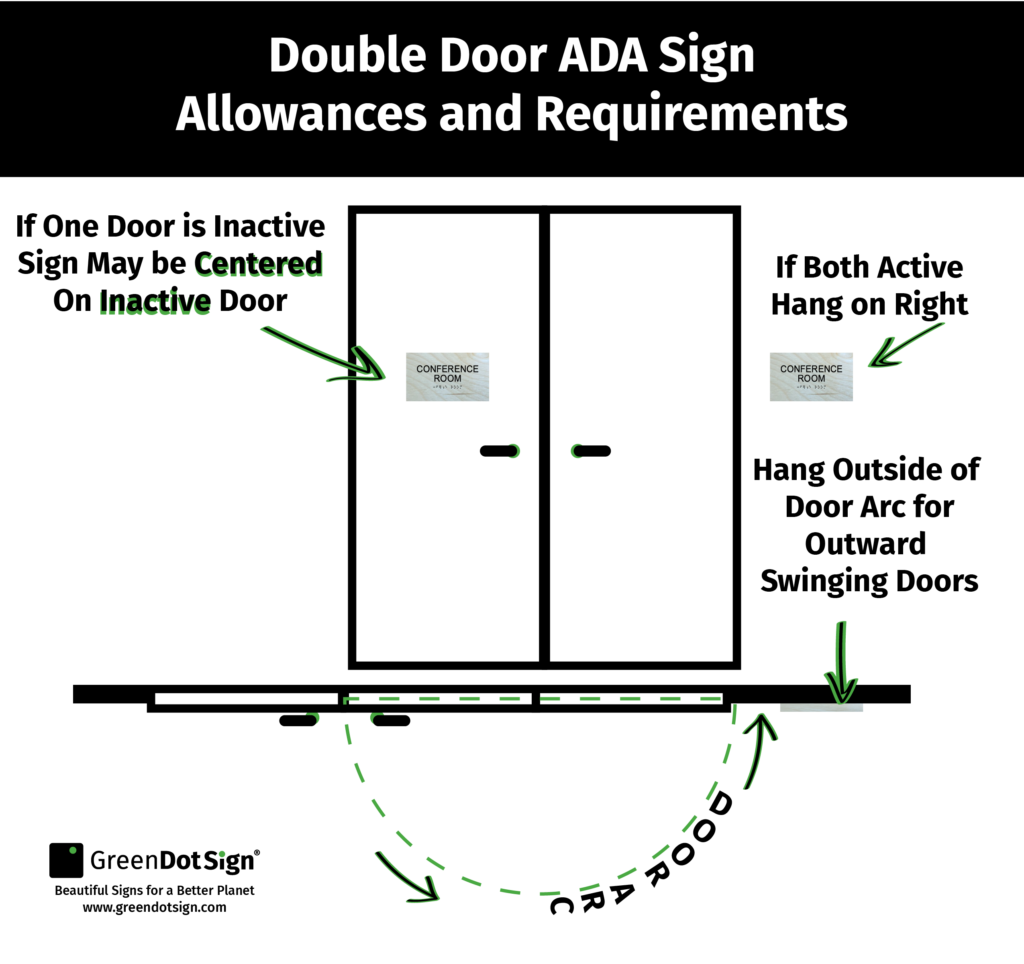INSTALL SIGNS SECURELY
Foam tape with silicone is the most common way to install restroom, ADA and wayfinding signs. These adhesives work quickly and bind to most wall surfaces.
The Green Dot Sign® preferred approach to mounting ADA signs utilizes four sustainable wood pegs. This method not only reduces plastic production and use, but is also the most secure.
If wood pegs are part of your order, our signs are shipped with the pegs glued into holes made on the back of the sign blank. Customers then use the provided pattern to drill four holes into their wall.
Next, silicone or eco-friendly caulking compound is applied to the holes and sign back to ensure a strong, long-term hold.
Many of our experienced clients insist upon mounting signs with wooden pegs. They have found that adhesives, such as foam tape, do not withstand vandalism and other risks associated with long-term use.
ADA SIGN INSTALLATION TOOLS
- Cordless drill with 5/16” bit (for 4-peg method)
- Low tack tape
- Silicone or equivalent
- Torpedo level
- Tape measure
- Installation pattern (for 4-peg method)
- A written ADA compliant location plan
- Paper towels, trash receptacle and vacuum
HIRING A SIGN INSTALLER
While most handymen or construction crews are more than capable of installing a signage system, sometimes there is value in using a professional sign installation company.
If you want to hire a professional sign installer, feel free to contact us for suggestions. If you want to contract a sign installation company directly, we recommend searching the Professional Decal Application Alliance (PDAA) Directory or the 3M Certified Installers Database.







